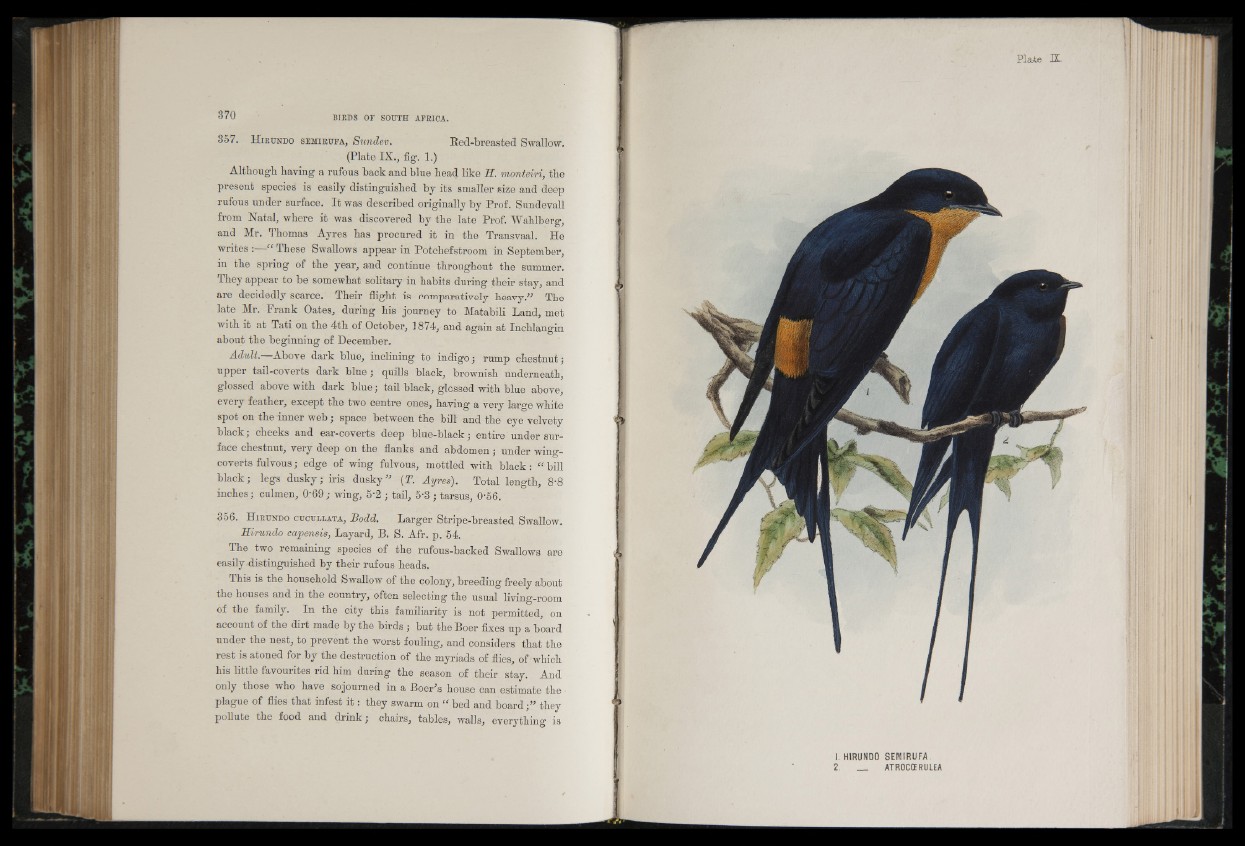
3 5 7 . H irundo sem ir u fa , Sundev. Red-breasted Swallow.
(Plate IX., fig. 1.)
Although having a rufous back and blue head like H. monteiri, the
present species is easily distinguished by its smaller size and deep
rufous under surface. It was described originally by Prof. Sundevall
from Natal, where it was discovered by the late Prof. Wahlberg,
and Mr. Thomas Ayres has procured it in the Transvaal. He
writes : “ These Swallows appear in Potchefstroom in September,
in the spring of the year, and continue throughout the summer.
Ihey appear to be somewhat solitary in habits during their stay, and
are decidedly scarce. Their flight is comparatively heavy.” The
late Mr. Frank Oates, during his journey to Matabili Land, met
with it at Tati on the 4th of October, 1874, and again at Inchlangin
about the beginning of December.
Adult. Above dark blue, inclining to indigo; rump chestnut;
upper tail-coverts dark blue; quills black, brownish underneath,
glossed above with dark blue; tail black, glossed with blue above,
every feather, except the two centre ones, having a very large white
spot on the inner web ; space between the bill and the eye velvety
black; cheeks and ear-coverts deep blue-black; entire under surface
chestnut, very deep on the flanks and abdomen; under wing-
coverts fulvous; edge of wing fulvous, mottled with black : “ bill
black; legs dusky; iris dusky” (T. Ayres). Total length, 8‘8
inches; culmen, 0’69; wing, 5‘2 ; tail, 5-3; tarsus, 0'56.
356. H iru n d o cucullata, Bodd. Larger Stripe-breasted Swallow.
Hirundo cajpensis, Layard, B. S. Afr. p. 54.
The two remaining species of the rufous-backed Swallows are
easily distinguished by their rufous heads.
This is the household Swallow of the colony, breeding freely about
the houses and in the country, often selecting the usual living-room
of the family. In the city this familiarity is not permitted, on
account of the dirt made by the birds ; but the Boer fixes up a board
under the nest, to prevent the worst fouling, and considers that the
rest is atoned for by the destruction of the myriads of flies, of which
his little favourites rid him during the season of their stay. And
only those who have sojourned in a Boer's house can estimate the
plague of flies that infest i t : they swarm on “ bed and board;” they
pollute the food and drink; chairs, tables, walls, everything is